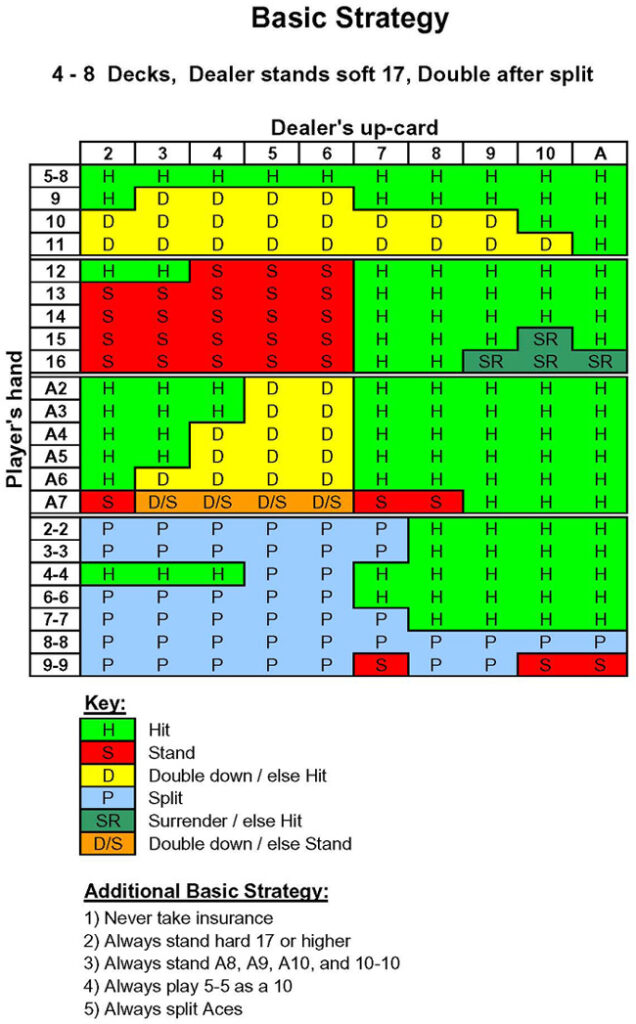Mastering the Maths: The Secret to Beating Blackjack
From making harmless bets in your day-to-day life to playing high-stakes poker, gambling has managed to infiltrate various aspects of our lives.
But did you know that this billion-dollar industry is kept afloat on the back of some fairly rudimentary mathematics?
Casinos make money because every game they offer has a built-in statistical advantage for the casino. While this edge can be very small, over time it will earn the casino enough to invest its money into buying big hotels, restaurants and decorations which all entice you to stay gambling for even longer. This demands the question: is there any point in even playing at a casino if, before you even buy chips, you’ve been doomed to lose all your money?
Knowing that the player is at a disadvantage may make some people give up trying, but there is still hope! The mathematical basis of casino games can be manipulated in your favour to ensure that the casino gains the least advantage possible which is especially prevalent in one of the most common casino games – blackjack.

Image credit: Kvnga, Unsplash Licence via Unsplash.
What is Blackjack?
Blackjack is a card game wherein people play against the dealer and try to beat them by having a combination of cards in their hands whose total sum is as close to 21 as possible, without going over.
At the start, you are given two cards, the same as the dealer, and are allowed to ask for as many more as you want but if your total sum is greater than 21, you “bust” or automatically lose.
Each card is assigned a numerical value which, when combined with other cards, creates various sums:
- Numbered cards (2 to 10) are worth their numbers
- Face cards (Jack, Queen, King) are worth 10 points each
- Aces can be worth either 1 or 11 points (the player can choose which value they want based on what will benefit their total sum more)
The catch is that you can only see one of the dealer’s cards while the other is face-down. You can see your own 2 cards; therefore, you are betting on what you think the dealer’s face-down card is.
There are a couple of special gameplay techniques which are not necessary to play blackjack casually but are relevant for the most profitable strategy.
These involve:
- Splitting: if your two cards are the same then you have the option to “split” your hand meaning that you can play two separate hands at the same time
- Doubling down: after receiving your first card you can “double down” meaning you double your initial bet before receiving a second card
- Surrendering: whether you can choose this option depends on the specific rules of the game you are playing but it essentially allows you to forfeit from the game and keep half of your initial bet thus saving you from potentially losing it all.
To see the game in action, please view the video below:

Image credit: Kaysha, Unsplash Licence via Unsplash.
History of Blackjack
Unfortunately, there is no one accepted theory which explains where and how blackjack originated. The consensus is, however, that it is at least a couple of hundred years old and stems from an initial game called ‘twenty-one’ which is referred to in various languages throughout history. This relates to the core aim of the game – to get cards whose total adds up to 21.
Why is Blackjack so popular?
The main reason behind blackjack’s popularity is its simplicity. It is neither hard to play nor hard to learn, hence appeals to a wide variety of people. Despite a casino’s reputation for ripping people off, blackjack is also one of the games which offers the least house advantage, meaning that the house (or the casino) will pay out more over its average lifespan.
However, this promise, which makes the game all the more attractive, can only really be taken advantage of when you become aware of how to use the maths of the game against it.
How to Win?
Unfortunately, blackjack is, at the end of the day, a game of probability hence cannot be a 100% foolproof way of making money. Nevertheless, there are elegant, and legal, ways to ensure that you are as successful as possible: one of the most well-known is counting cards. Players, even if they are just doing it subconsciously, make their decisions, and hence place their bets, based on the probability of drawing specific cards. Therefore, their whole reasoning and game strategy is based on maths.
Advanced players sometimes use card counting strategies to gain an edge by keeping track of the number of high-value cards (10s and Aces) compared to the number of low-value cards (2-6) left in the deck. When there are more high-value cards remaining, it is favourable for the player and hence may cause them to increase their bets. This is, unfortunately for casinos, quite hard to prevent, resulting in a big brother-like system filled with security cameras scanning every inch of the casino floor from above.
However, even card counting merely builds upon Basic Strategy so they must be used together.
Basic Strategy in blackjack is something of a misleading name which refers to a set of moves, based on the combination of both the player’s cards and that of the dealer’s upcard (the dealer’s card which is face-up on their side of the table), that a player should make during a game to maximize their chance of winning. It is a strategy derived from the maths behind the game which takes into account the probabilities and expected values (the long-term average outcome of a specific decision in blackjack) of various decisions. This is conveyed in the form of a chart which, if you follow it exactly, can reduce the house edge and ensure the player makes the best statistical decision in different situations.
The way to use this strategy card is to check where your cards (or your card total) and the dealer’s up card (the card in their hand which you can see) meet. The chart then tells you which one of 5 different options is the most mathematically beneficial based on your specific combination of cards. These options consist of either standing (sticking with your original two cards by not asking for another), doubling down, surrendering, splitting or hitting (asking for another card on top of the original two). In addition, the terms “hard” or “soft” refer to whether there is the opportunity to go “bust” if you take another card – eg a “soft” 17 can never equal more than 21 even if you take another card because you have an ace which you can choose the value of.
For example, if I had an Ace and a 9 and the dealer had a 10, I would “stand” ie stick with my original two cards if I was following Basic Strategy.

Image credit: StackOverflow.
Conclusion
By following this table, you will be able to take advantage of the maths behind this game and use it to increase your chances of beating blackjack. Nevertheless, there will never be a way to guarantee success, so you must be prepared to potentially lose before you start winning – Basic Strategy is based on waiting for a bit of luck and then making sure you make the most of it when it finally hits.
This shows just one of many direct applications maths can have on our world, thus proving its importance and relevance in today’s world.
Author
Charlotte McCarthy

